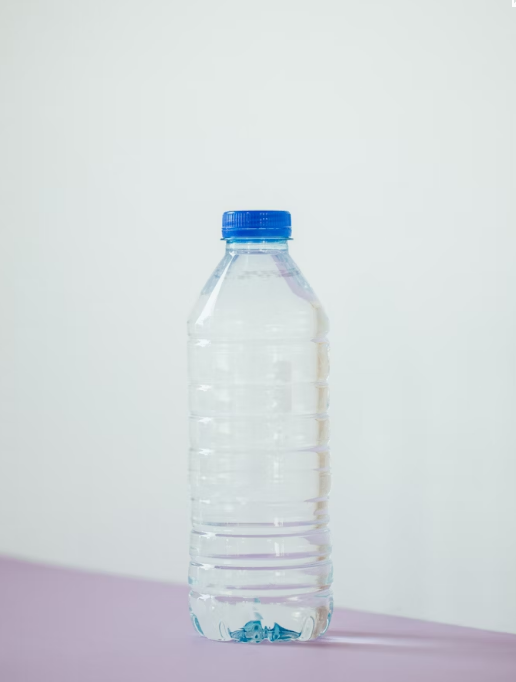
You Could Ingest Over 90,000 Microplastic Particles a Year
Picture this: You’re drinking a bottle of water after a run. Refreshing, right? I do it all the time.
Now imagine you’ve just swallowed hundreds of tiny plastic particles—too small to see, but not too small to hurt you. That’s not science fiction. It’s our everyday reality.
A groundbreaking 2025 review published in Frontiers in Public Health brings this issue into sharp focus. While most conversations about microplastics focus on polluted oceans and marine wildlife, this study flips the script. It dives deep into what happens when microplastics enter our bodies—and what they do once they’re inside.
Let’s just say: they don’t just pass through.
From Laundry Rooms to Lungs: How Microplastics Get In
Microplastics are particles smaller than 5 millimeters, often invisible to the naked eye. They come from familiar sources: the synthetic fleece jacket you wore last winter, the facial scrub in your shower, and the plastic bottle sitting on your desk. Over time, plastic products break down—through friction, sunlight, washing, or just age—into ever-smaller bits that end up in our environment.
But they don’t stay there. According to the study, microplastics are now found in human placentas, lungs, breast milk, and even blood. They enter our bodies primarily through three doors:
- Inhalation (especially from indoor air loaded with polyester fibers from clothing and carpets)
- Ingestion (via bottled water, seafood, salt, and even canned goods)
- Skin contact (from personal care products like lotions and soaps)
And yes, your office air might be worse than the air on the freeway. Researchers found 60 fibers per cubic meter indoors versus just 1.5 outdoors.
Tiny Particles, Big Trouble
So, what’s the big deal about swallowing—or breathing in—a few plastic specks?
It turns out, these plastics don’t just hang around passively. Once inside your body, they can:
- Trigger inflammation: Think chronic swelling and immune system confusion. Some particles stimulate inflammatory pathways in the lungs, liver, and even the brain.
- Cause oxidative stress: Microplastics mess with your cell’s energy production, leading to oxidative damage—the same stuff linked to aging, cancer, and heart disease.
- Damage DNA and cause cell death: Studies on mice and zebrafish show that exposure can harm genetic material, disrupt reproduction, and lead to early cell death.
Worse still, microplastics act like sponges for other toxins, carrying heavy metals like lead and arsenic or pathogens like bacteria and viruses right into your system. One study even suggested they could be helping spread COVID-19.
Microplastics and the Mind: A Neurological Red Flag
Here’s where things get truly unsettling.
Animal studies cited in the review showed that polystyrene microplastics can cross the blood-brain barrier, a protective wall that shields your brain from toxins. Once inside, they caused memory loss, behavioral changes, and inflammation. In mice, exposure reduced key brain proteins tied to learning and increased markers of neurodegeneration.
The implication? These particles could be quietly fueling the rise of disorders like Alzheimer’s, Parkinson’s, and other neurodegenerative conditions.
Your Bottled Water May Be the Worst Offender
You might think bottled water is the safer, cleaner choice. But think again.
One study cited in the review found that people who drink bottled water consume up to 90,000 microplastic particles annually, compared to just 4,000 from tap water. Recycled plastic bottles had the highest concentration, with up to 118 particles per liter.
And those are just the big ones (>100 μm). The real danger may be the smaller, undetectable nanoplastics that slip through even the best filters.
What Can Be Done? A Public Health Wake-Up Call
The researchers aren’t just raising alarm bells—they’re calling for action:
- Policy change: Ban microbeads and restrict single-use plastics. Upgrade wastewater treatment to filter out microplastics before they reach our homes.
- Research investments: Study how microplastics interact with other pollutants. Track long-term health effects in vulnerable populations like children and the elderly.
- Innovation: Support the development of biodegradable materials and safer product design.
- Public education: Help people reduce exposure—ditch bottled water, avoid synthetic clothing when possible, and choose personal care products without microbeads.
As the authors note, the issue is urgent but not hopeless. What we do today can shape the invisible environment inside our bodies for decades to come.
What’s Next?
The truth is, we’re only beginning to understand how deeply microplastics are embedded in modern life—and in our bodies. Future research will need to go beyond animal studies and start tracking human health over time. We also need to determine how these tiny particles interact with one another, with pollutants, and with humans.
In the meantime, there’s plenty we can do to push for cleaner systems, smarter policies, and safer choices. Because when it comes to plastics in our bloodstreams, the stakes couldn’t be higher.
Join the Conversation
- How are microplastics showing up in your daily life?
- Would you change your habits—like avoiding bottled water—based on this research?
- What role should public health leaders play in regulating invisible pollutants like microplastics?
Let’s talk—because this invisible threat demands a very visible response.



